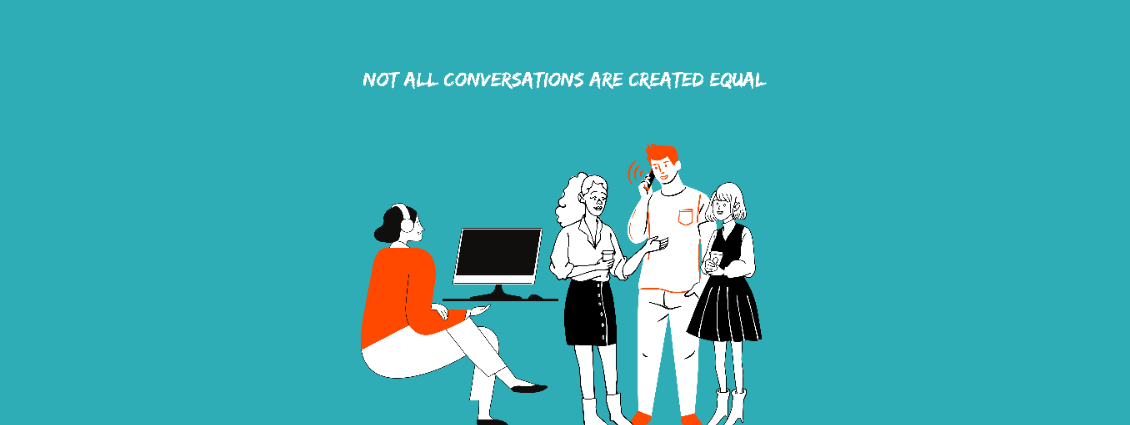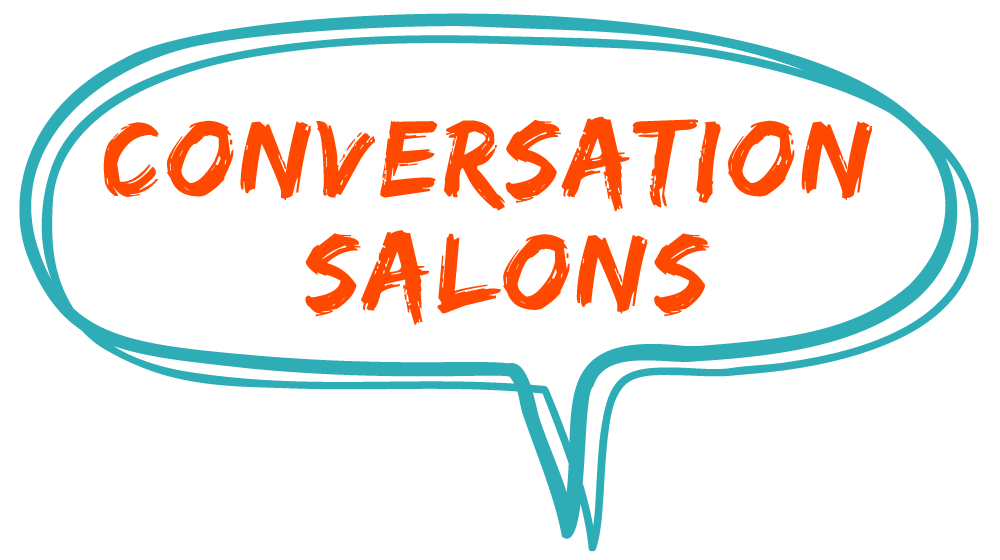
By Gillian Arigho
THE DECLINE OF CONVERSATION
All too often do we find ourselves scrolling, refreshing and hitting a lull in our newsfeeds. Swiping down to refresh the page, only for it to display the same information as last time. Growing frustrated with the lack of communication the device is giving us, we resign to locking our phones and waiting ten minutes or more for news to form, for opinions to be posted or messages to be received. It’s ironic how we look to devices to build real-time connections considering there are seven billion others on the planet; each chock-full of news, experiences and outlooks.
After reading Johann Hari’s Lost Connections, I began to understand how relying on my devices and apps for connection and entertainment were a cause of some of my frustrations. By indulging in technology from dawn to dusk I had essentially eradicated face-to-face communication for five out of seven days of the week. Once the weekend rolled around my appetite for conversation would be so jaded by work emails and lengthy video calls that, occasionally, I’d find myself wanting to cancel my social plans. Like many others, I was unconsciously transitioning towards a reclusive lifestyle by letting my face-to-face encounters take a back seat.
WHY IS FACE-TO-FACE CONVERSATION IMPORTANT
Face-to-face conversation is important for innumerable reasons. It’s necessary for key communication skills such as the ability to speak and listen to others. Not only to what’s being said, but learning to interpret the meaning of the message through a speaker’s use of volume, tone, facial expression and body language. It facilitates the exchange of thoughts and ideas and encourages us to think critically about our own opinions. This mode of connection helps us assert ourselves and feel as though we are being listened to; a need that we often let go unfulfilled. It reminds us that we are being noticed and worthy of attention.
Offline conversations develop new relationships and deepen existing ones – personal, professional or otherwise. It facilitates us in understanding a new point of view and subsequently being able to make ourselves better understood. Much like how a picture can’t do a landscape justice, online communication can’t capture the depth that occurs in face-to-face conversations. The catharsis of deep belly laughs in good company, the glint of an eye, the tremble of a lip that can’t quite bring itself to say something. The delivery of a punchline and the moral of the story. These are all things online conversations can’t emanate. No emoji will ever accurately portray a toothy grin and no amount of “x”s can do love or sincerity justice.
HOW THIS CAME TO BE
Since the creation of Web 2.0 and mobile phones creating the pathway for seemingly limitless connectivity, steadily has our urge to leave the house decreased. Why? Because nowadays we don’t have to. Through the apps on our phone we can virtually transcend the previous limitations of time and space. Video call applications allow us to see and speak to loved ones whenever suits. Online shopping platforms mean we can buy anything and everything online, from groceries and clothes to furniture and flights. Social media allows us to connect with like minded individuals. Search engines seemingly have every answer. We crave efficiency and nothing delivers more than a strong internet connection.
The immense span of the ways in which we can communicate has reduced the amount of time we actually spend together. We value the commodity that is spare time so much we often try to spend it alone or with a select few. What with a forty-hour work week, family commitments and more, socialising often falls to the wayside. It seems neighbours are less likely to call in for a chat and kids are happy to link up on Xbox servers. Escape is found through the scrolling of platforms on which we follow characters similar to ourselves, creating echo chambers. By creating a space where we don’t need to critically think we end up passively consuming the information in front of us. The polarised world we live in favours straight answers and cold hard facts, diminishing a powerful tool we possess – our sense of empathy. Online, we can just about keep the connection. In person, however, we can nurture it.
HOW TO REMEDY IT
Humans are hardwired to be sociable by nature, regardless of the poles of introversion and extroversion. As explained previously, technology can only scratch the surface of meaningful connection. This may help us understand why, even after a two hour phone call with your best friend, you might not feel fulfilled. Honour your innate need to socialise and actively make time for it. Employ the Connection Trifecta; good conversation, physical movement and Mother Nature. It’s as simple as arranging to meet a friend for a walk in the park. Make it more interesting and explore somewhere new to both of you. Bring the bike out or head to the beach. Create a setting where conversations can flow naturally.
On a daily basis, make an effort to chat to the smaller characters in the movie that is your life – the taxi man, your hairdresser, the barista taking your order. Greet your neighbours when you see them. At work, walk over to a person’s desk instead of sending them an email and spend lunch with someone rather than scrolling through your phone. Fill the awkward silences. Ask whoever you live how their day went. Skip the self service checkout and go to a manned till. Promote conversation any time you can and be active in creating offline connections. And last, but certainly by no means least, attend a Conversation Salon.
HOW CAN CONVERSATION SALONS HELP US CONNECT?
Great question! Conversation Salons aim to break down barriers between strangers by celebrating each other through the medium of face-to-face conversation. A salon creates a designated space for balanced conversation and connection to occur in a relaxed and welcoming environment. All it asks of its patrons is to listen to and respect each other, with no one individual dominating the conversation. This way, we can expose ourselves to a variety of opinions; not with the expectation of agreeing with or arguing against them, but conversely to explore and understand them. The natural flow of face-to-face conversation finds patrons exploring the grey area of subjects, employing empathy and critical thinking. Ideas are exchanged and lightbulb moments occur on individual and group bases. Diversity is celebrated and seeing topics from all angles is encouraged. In essence, humans impact and enhance each other’s lives and Conversation Salons hopes to facilitate this.
FOOD FOR THOUGHT
In the aforementioned book Lost Connections, Hari writes about a London doctor named Sam Ervington who has taken up the practice of “social prescribing” in his surgery. Ervington explains that, depending on their ailment, a patient is given a prescription to help them reconnect to others, to nature and to their health and their values. For example, someone facing stress-related issues could be prescribed yoga classes or a community gardening session three times a week. The key in every social prescription is offline engagement with others, essentially countering the social disconnect we’re so used to. In a growing number of locations around Ireland, health professionals now have access to social prescribing, a referral service that aims to reduce loneliness and social isolation by linking people with non-medical sources of support within their local community.
Would you like to see “social prescribing” become common practice in Ireland?
Read More: Say It To My Face
Read More: The Frankness of Friendship
